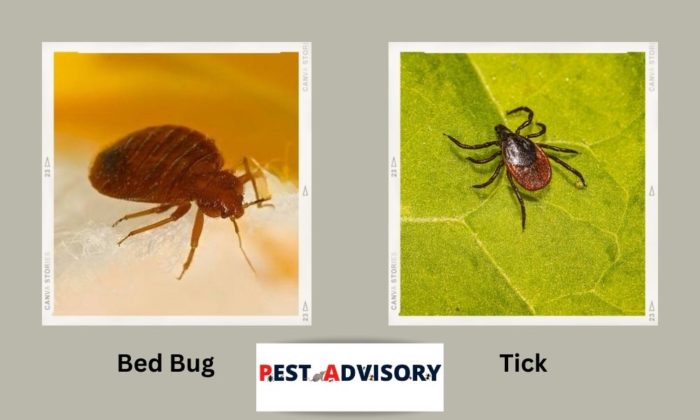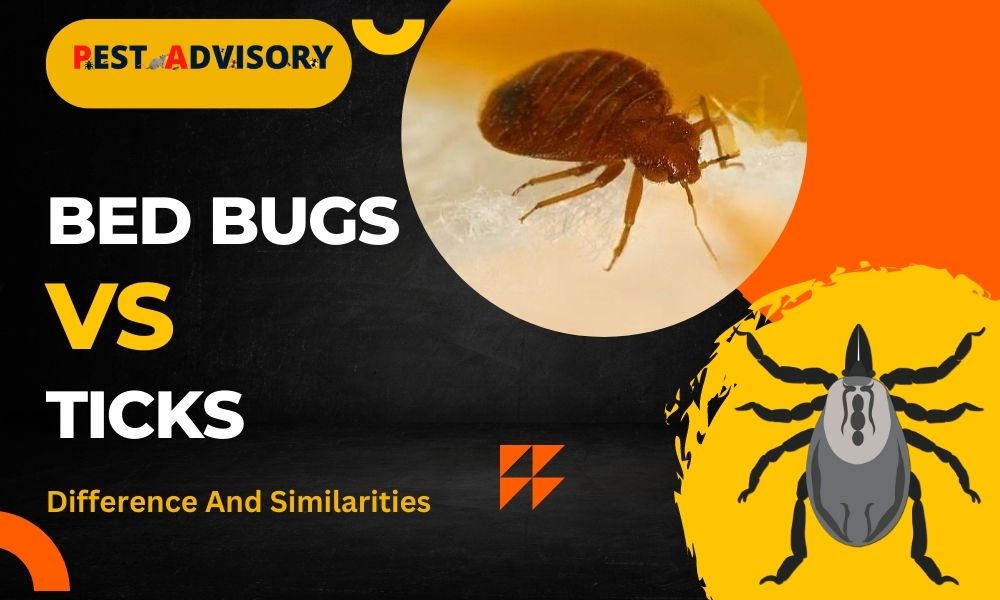If you’re suffering from insect bites, and you’re wondering how to eliminate them, you should know which pest you are dealing with first. Ticks and bed bugs are two similar-looking pests you certainly do not want in your home.
They are both unpleasant and often confused with one another due to their appearance but are very different!
In this article, we’ll discuss how we can tell the difference between ticks and bed bugs based on their appearance, feeding habits, lifestyle, and more. We’ll also talk about their similarities and prevention.
Important Note: If you're tired of pests and want a reliable solution, then you should definitely consider seeking help from a professional pest control company. DIY solutions can be effective, but if you're dealing with a significant pest infestation, you don't want to rely solely on DIY methods. Pest control companies typically don't charge huge fees. You can fill out this form to receive free quotes from the top local pest control companies, and compare the quotes and see for yourself. Then, finally, your pest problems will be eliminated for good.
What are Ticks and Bed Bugs?
Ticks belong to the phylum arthropod and are obligate bloodsuckers. They transmit various diseases to humans and animals through bites. There are more than 800 types of ticks, for example, dog ticks, deer ticks, and more.
Bed bugs are another group of blood-sucking parasites on some animals, birds, and humans but they seldom spread diseases. They are small, oval, brown, night-crawlers having a similar appearance to ticks.
The Difference in Appearance of Ticks and Bed Bugs
At a first glance, both these pests may look shockingly similar, but here are some ways in which you can tell them apart by their appearance.
1. Size
To the naked eye, both insects might appear similar in size but we’ll give you a trick to differentiate between them!
Ticks are about 3-4 millimeters in size and bed bugs are about 8 millimeters long. But this is not easy to estimate without using an instrument. So the trick is to think about seeds. If you think that the pest is the size of a sesame seed, then it is likely to be a tick, but if its size is comparable to an apple seed, then it is most likely a bed bug.
2. Color
Bed bugs can range in color from reddish-brown to deep brown, the former being after feeding. Every known species of bed bug ranges in between these colors.
The color of ticks changes from species to species. They are mostly of the same color as a bed bug, but depending on their species, they might have tan stripes, a white spot, or darker legs and a light body.
3. Shape
Ticks and bed bugs are both flat, oval, and wingless but the bodies of ticks are marginally narrower than those of bed bugs. Both pests swell after feeding
4. Legs
Ticks and bed bugs belong to different classes and hence have a different number of legs. Ticks are arachnids and have 8 legs. Bed bugs being insects have 6 legs. If you can carefully observe this, you can instantly know which of the two pests you are dealing with.

The Difference in Feeding Habits of Ticks and Bed Bugs
While both ticks and bed bugs are blood-sucking parasites, their feeding style is quite different from one another. Keen observation of their feeding style can help you distinguish between the two easily.
1) Host
Ticks prefer feeding on animals, however, if no animals are present, they bite humans.
On the contrary, bed bugs prefer biting humans and only switch to animals if their host is crowded with other bed bugs.
2) Bites
Ticks are constant feeders which means that they cling to their host for a day or two if they are not disturbed. They bury their heads in the skin and suck blood directly till they’re filled.
On the other hand, bed bugs take a few minutes to have their meals and then crawl back to their hiding places for several days to digest. Bed bugs expose a small area of skin by scratching and feeding on the blood that comes out.
3) Time of Day
Bed bugs mostly bite only at night, when you won’t even notice, and leave you unharmed.
But unfortunately, ticks aren’t so simple. While soft ticks are nocturnal, hard ticks are diurnal which means that they can feed during the day.
Since bug and tick bites do not look that different, it is best to notice the time at which you got the bite to identify it.
The Difference in the Habitat of Ticks and Bed Bugs
You might already know that bed bugs reside in human dwellings and hide in places like mattresses, furniture, cracks, walls, etc. But ticks are mostly found outdoors in grassy and woody areas. While indoors, ticks are mostly attached to the host.
Bed bugs travel by clinging to your luggage, furniture, or other belongings but ticks travel by clinging to their host.
The Difference in Diseases Caused by Ticks and Bed bugs
A major difference between ticks and bed bugs is how much harm they can cause. While ticks can cause serious issues and diseases, bugs are not as harmful.
Following mosquitoes, ticks are the second-highest vector of human diseases. A single tick bite may cause diseases like Lyme disease, Relapsing fever, Rocky Mountain spotted fever, Colorado tick fever, Tularemia, Q fever, tick paralysis, Bourbon virus diseases, Read meant allergy, and the list is never-ending.
Bug bites, to a maximum extent, may only cause allergy and cellulitis in rare cases.
Similarities between Ticks and Bed Bugs
Both pests use a bite-like mechanism to get a meal of human or animal blood and inject chemicals that work as anesthesia on the site of the bite. Both insects can feed on both animals and humans. Their bites rarely cause allergic reactions.
Both pests grow through several nymph stages, the adult being bigger than any stage. Both pests move around by crawling and cannot fly or jump.
Prevention from Ticks and Bed Bugs

The main risk factor for tick bites is moving in grassy areas without protective clothing or repellent. The major risk factor for bed bugs could be sleeping in a bed infested with them.
But it’s better to be safe than sorry! There are many ways you can prevent yourself from both bed bugs and ticks. Here are a few!
Prevention Against Bed Bugs:
- Limit purchasing second-hand furniture, and clean and disinfect it before bringing it into your home.
- Keep your house tidy and clutter-free to eliminate any hiding spots.
- Wash and dry your clothes and luggage after coming back from a stay at a hotel to ensure you didn’t carry these little creatures with you.
- Purchase a mattress encasement.
Prevention Against Ticks:
- Check your pets and children regularly for ticks and tick bites.
- Avoid woody and grassy areas which are common homes for ticks.
- Wear protective gear, repellent, and full-sleeved clothing while doing outdoor activities like hiking.
- Mow the grass regularly and avoid any wood piles in your yard.
Final Words
When biting pests infest your home, it is important to know what you are up against, to find a suitable method for elimination.
If you are dealing with a pest problem, we got your back!
Since you now know what pest you’re dealing with, half of your problem is solved! Now all you need to do is follow the methods of prevention, and find a suitable method for elimination, and get started! DO NOT let your pest problem grow at any cost!
All the Best!

